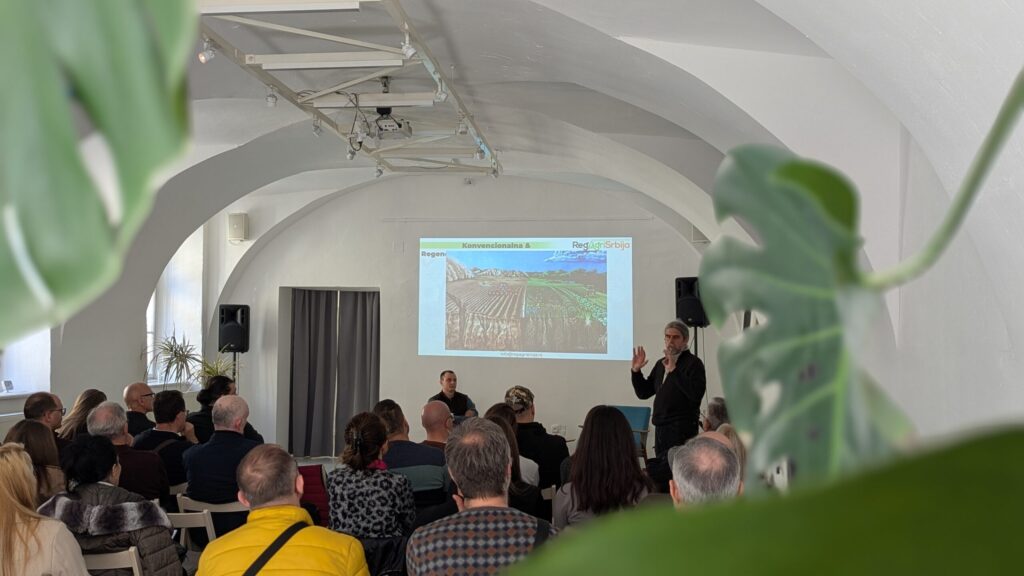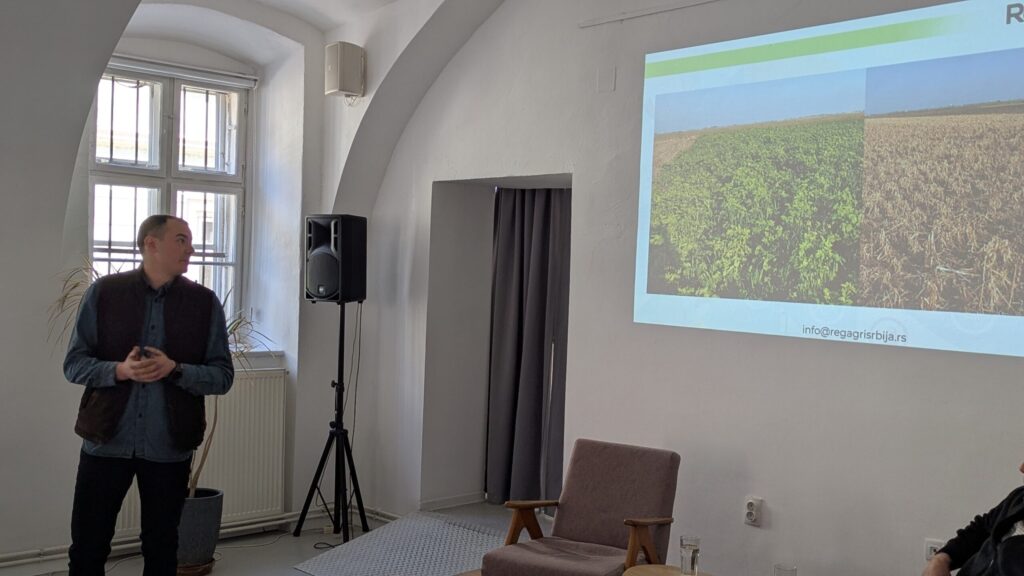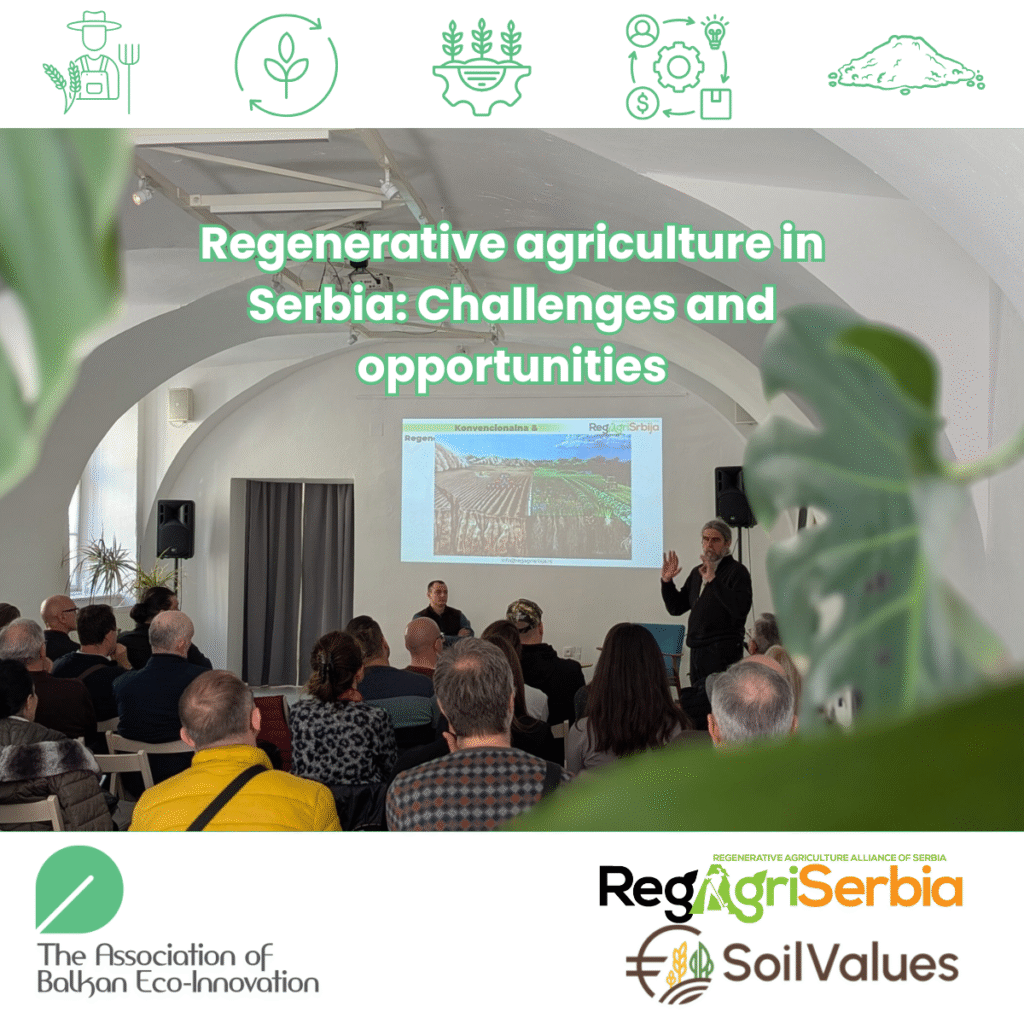Regenerative agriculture has increasingly attracted attention as a possible solution to improve soil health, boost resilience to climate change, and ensure the long-term sustainability of agricultural production. At a recent event organized by the Regenerative Agriculture Alliance of Serbia (coordinated by The Association of Balkan Eco-Innovation), farmers, agronomists, and agricultural advisors discussed the key challenges and benefits of this approach.
What is regenerative agriculture?
Regenerative agriculture is a production system that enhances soil structure and fertility, reduces erosion, and increases carbon storage capacity. Its core principles include:
- Minimal soil disturbance to preserve microbiological biodiversity
- Continuous cover cropping to reduce degradation
- Increasing biodiversity through diverse plant and animal species
- Integrating livestock into farming systems for natural soil regeneration
Challenges and opportunities in Serbia
Participants shared experiences and discussed obstacles to adopting regenerative practices:
Use of Agrochemicals
Although regenerative agriculture involves reducing synthetic fertilizers and pesticides, it does not exclude them completely. The key lies in precise and targeted application, achieving a balance between yields and ecosystem preservation.

Yields and Economic Sustainability
One farmer shared data comparing yields under regenerative practices versus conventional production. The results showed minimal yield differences but significant long-term benefits for soil quality. Regenerative systems also reduce farms’ dependence on external inputs, lowering production costs and the need for government subsidies. Crop rotation, integration of livestock and crop production, and the creation of healthier, higher-nutrition food further enhance economic stability.
Regenerative agriculture opens new revenue streams, including the sale of carbon credits for sequestered soil carbon and the development of agritourism as an additional income source.

Soil conservation and microbiology
Practical examples showed that implementing regenerative practices increased the presence of earthworms and beneficial microorganisms, directly improving soil structure and resilience to drought and erosion. Regenerative practices can raise humus content by 0.06–1% per year (previously it was believed it could take 60 years to increase by 1%).
Climate change and adaptation
Climate change affects yield variability and water availability. Participants observed that water moves into deeper soil layers but noted that regenerative practices improve the soil’s ability to retain accumulated winter moisture until July, helping mitigate drought and extreme weather.

Why the future of agriculture should be regenerative?
Over the long term, regenerative agriculture offers sustainable solutions for soil improvement, increases farm profitability, and reduces negative environmental impacts.
If you’d like to learn more about regenerative agriculture and how it can be applied in Serbia, explore the Alliance learning resources, subscribe to the newsletter, and join us at upcoming events.

The event was supported by the European Union under the SoilValues project.
